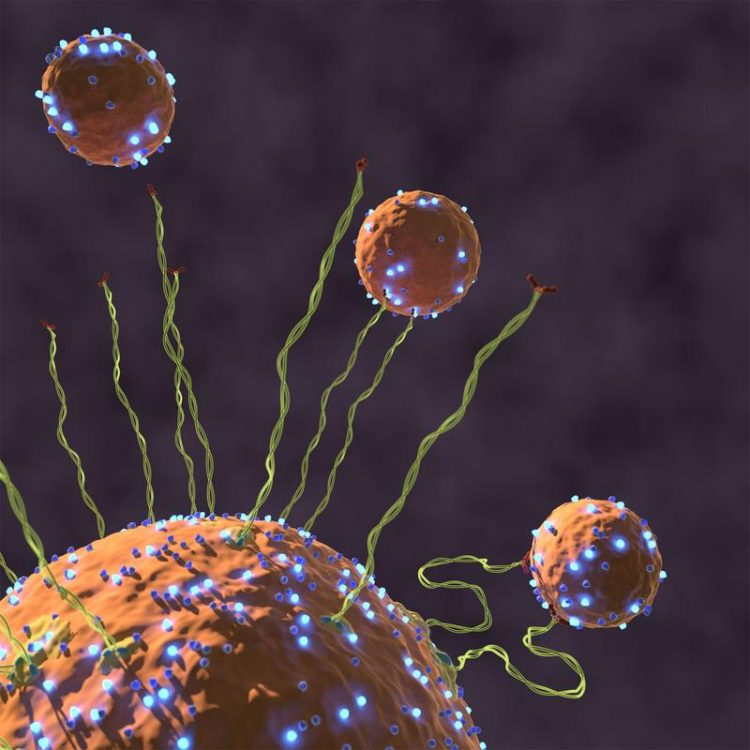From rigid to flexible

Capture of a vesicle by an endosome by the tethering factor EEA1 binding Rab5. Active Rab5 (shiny blue particles) induces a change in flexibility of EEA1 (green filaments) generating an entropic collapse force that pulls the vesicle toward the target membrane to dock and fuse. Credit: Mario Avellaned
This cargo is located in or on intracellular membranes, called vesicles. These membranes have a signature, and only those with the correct signature may fuse with the membrane of another organelle into one compartment.
The membrane itself must be recognized by a target membrane, which employs long tethering proteins to find its match.
David Murray and Marcus Jahnel from the labs of Marino Zerial at the Max Planck Institute of Molecular Cell Biology and Genetics (MPI-CBG) and Stephan Grill at the Biotechnology Center of the TU Dresden were curious to find out how these large tether proteins are able to recognize the signature of a membrane compartment and pull it in in order for the small fusion proteins to engage.
They and their colleagues discovered that when the vesicle docks by an active protein called Rab5, GTPase, this protein is sending a message along the rigid tether protein to become flexible.
This change in flexibility results in a force that starts the vesicle's trip towards the target membrane to initiate docking and fusion.
This newly found mechanism is published in the journal Nature and intuitively explains how traffic within the cell can be efficient and selective, and resolves a paradox of sizes.
Media Contact
All latest news from the category: Life Sciences and Chemistry
Articles and reports from the Life Sciences and chemistry area deal with applied and basic research into modern biology, chemistry and human medicine.
Valuable information can be found on a range of life sciences fields including bacteriology, biochemistry, bionics, bioinformatics, biophysics, biotechnology, genetics, geobotany, human biology, marine biology, microbiology, molecular biology, cellular biology, zoology, bioinorganic chemistry, microchemistry and environmental chemistry.
Newest articles

First-of-its-kind study uses remote sensing to monitor plastic debris in rivers and lakes
Remote sensing creates a cost-effective solution to monitoring plastic pollution. A first-of-its-kind study from researchers at the University of Minnesota Twin Cities shows how remote sensing can help monitor and…

Laser-based artificial neuron mimics nerve cell functions at lightning speed
With a processing speed a billion times faster than nature, chip-based laser neuron could help advance AI tasks such as pattern recognition and sequence prediction. Researchers have developed a laser-based…

Optimising the processing of plastic waste
Just one look in the yellow bin reveals a colourful jumble of different types of plastic. However, the purer and more uniform plastic waste is, the easier it is to…



